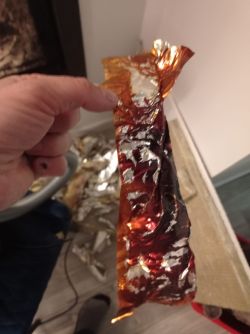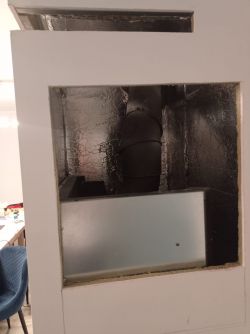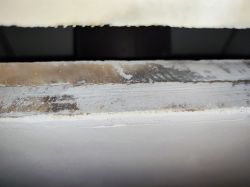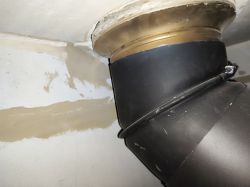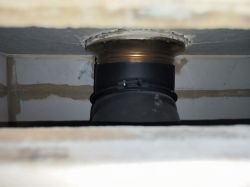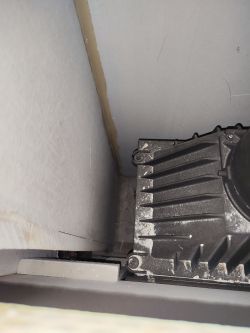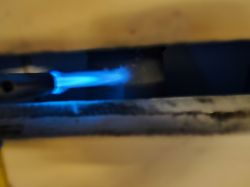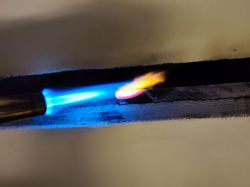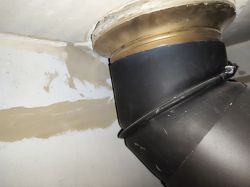I have also been struggling with this problem for a long time. The "experts" made the fireplace casing out of silicate boards, but they put wool on the ceiling and behind the wall insert (they probably ran out of boards).
Initially, it wasn't so noticeable, but for about 2 years now there has been a very irritating smell (the scratchy throat that my colleague mentioned above is characteristic).
Of course, all forums have been reviewed and analyzed. First, I peeled off the aluminum tapes as far as I could reach with my hand through the exhaust grilles. Of course, it didn't help.
I've been struggling with my thoughts for a year and last week I made two changes to the casing and threw out all the wool. Instead of wool, I replaced the insert with silicate boards. Above the flue (20 cm) I made a ceiling of silicate boards. In general, today there is a typical housing made of Varmsen silicate boards without wool. On Saturday evening, I temporarily installed the search engine and started...
After 40 minutes, when it was hot, I felt the smell again (although much less, I think). Well, I'm really pissed off.
There's nothing burning inside right now, so where's the smell coming from? Maybe from the exhaust pipe... maybe from the insert (Romotop dynamic - expensive and reputable)... it's hard to say. Now replacing this pipe (it's terribly tight), and even more so the insert, seems pointless.
In my opinion, heating it with a flashlight makes no sense because it generates temperatures above 1000 C and you will never experience such temperatures.
Interestingly, when I approach the exhaust grille, I don't really feel anything, I feel warm air, and in the living room where there is a fireplace I don't feel the smell much either. It is most noticeable on the first floor, where the warm air flows.
I lost any idea what to do next because I was sure that removing the wool would solve the problem. Replacing the exhaust pipe is also very unreliable in my opinion because they are all the same. My ones look really solid and you don't feel any of them when they're inside (not while smoking, of course).

). It is not certain whether replacing the pipe will do anything, and by chance, you can finally replace the entire house, which, as you can see in the example of my colleague, did not help much hehehe (I feel sorry).
The only option is to add another grille at the front (from the decompression chamber). I don't know what it will do, maybe it will slightly lower the temperature inside, but I don't smoke, I don't know how, because the insert is small, I just add 1 piece of wood at a time.



